Gallery: Erebus Volcano's Amazing Lava Lake
Majestic mountain
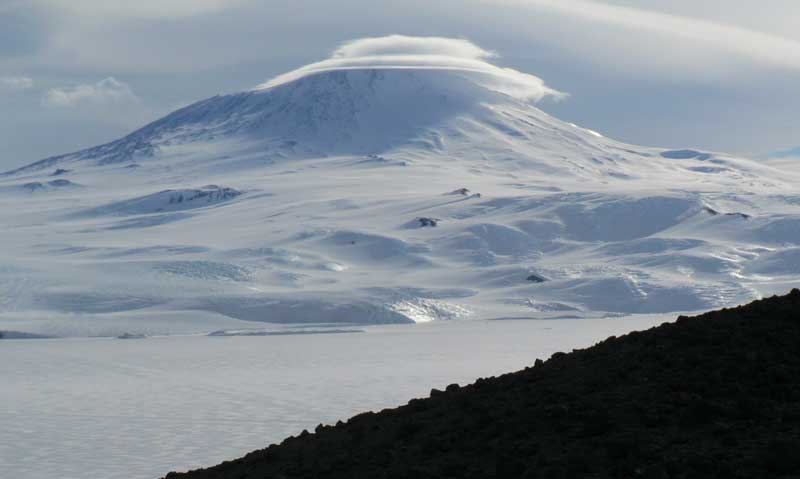
Despite the deadly climate, everything from earthquake monitors to infrared cameras perch on Erebus volcano year-round. Scientists avidly study the Erebus and its lava lake in hopes of unraveling the mysteries of how volcanoes work.
Erebus from above
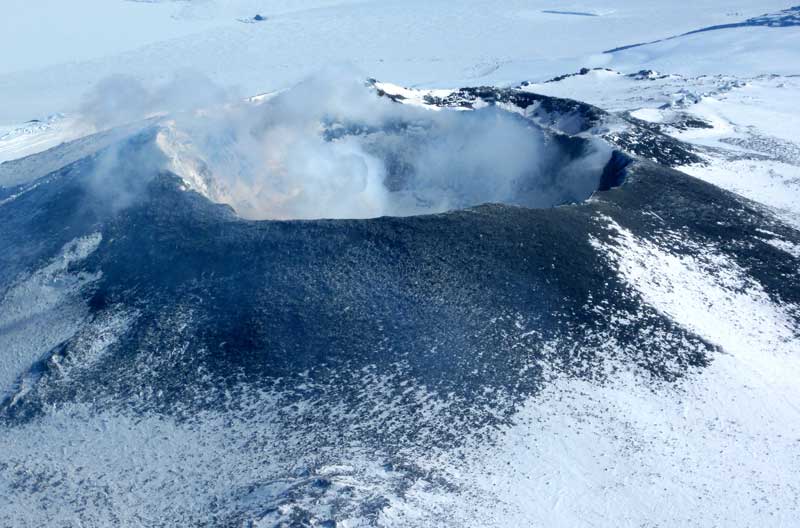
The summit of Mount Erebus, the southernmost active volcano on the planet.
Volcanic heart
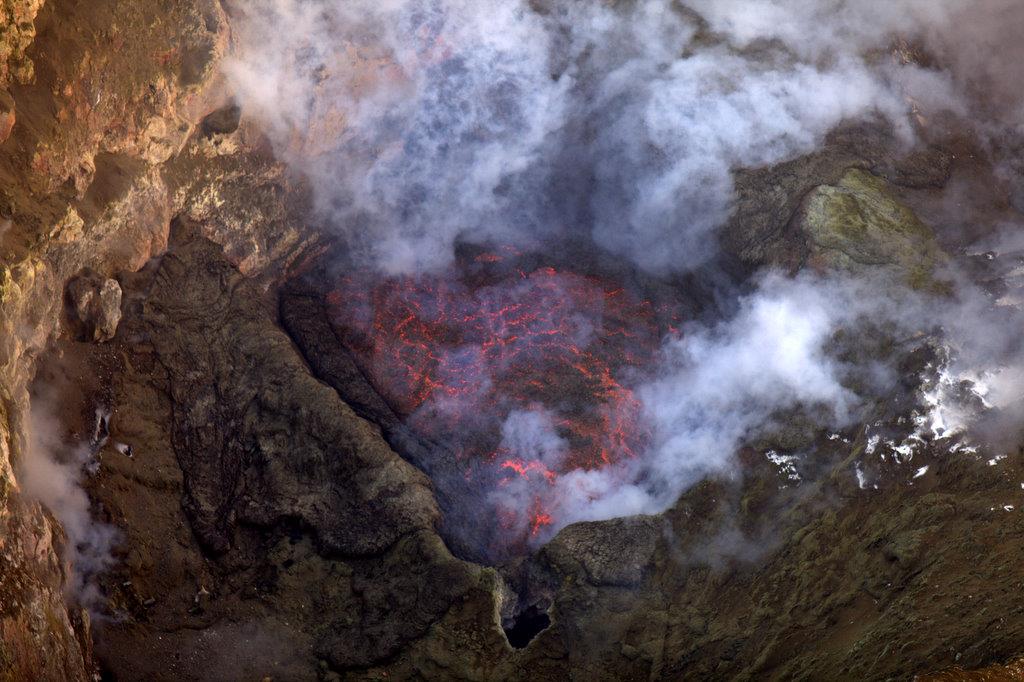
This view of Erebus volcano's lava lake was snapped in 2012, when the lake was about 100 feet (30 meters) wide.
Looking for clues
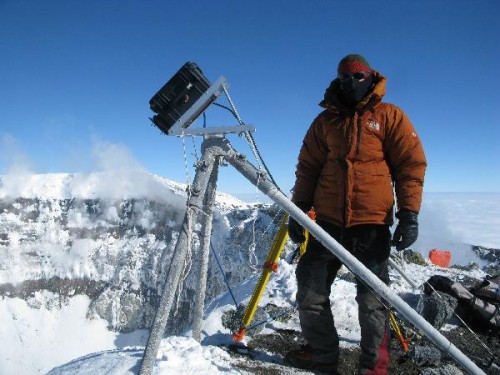
An infrared camera installed during the Antarctic summer field season and left to overwinter on the crater rim.
After winter
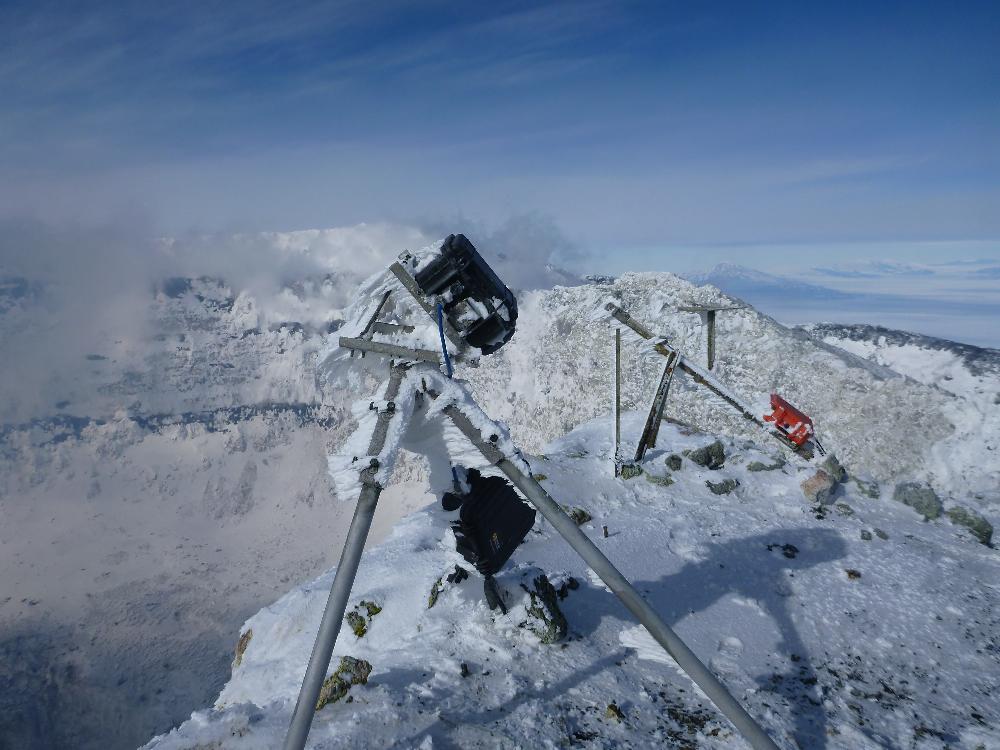
Harsh winter weather broke the camera's power cable and bent the stainless steel tripod mounts. The camera restarted when power was restored.
Erebus erupts in infrared
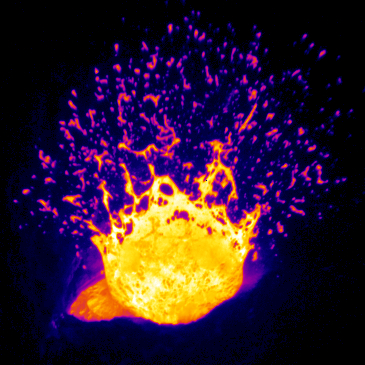
A thermal camera image of an eruption in Erebus volcano's lava lake. Erebus erupts when gas bubbles burst inside its lava lake, flinging lava out onto the crater and surrounding regions.
Powering up

Spooling the new power cable out from the crater rim. Researchers ended up using 8 of these drums to get from the crater down where the batteries and solar panels are. Each drum weighed 95 pounds (43 kilograms).
Sign up for the Live Science daily newsletter now
Get the world’s most fascinating discoveries delivered straight to your inbox.
Watching Erebus breathe
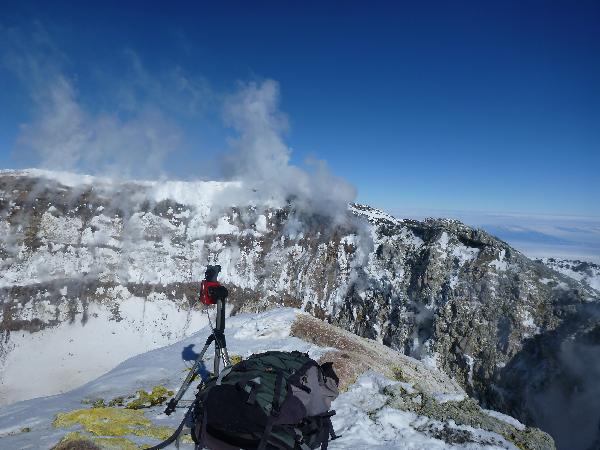
A portable spectrometer measures sulfur dioxide emitted by Erebus volcano.
High-altitude antenna
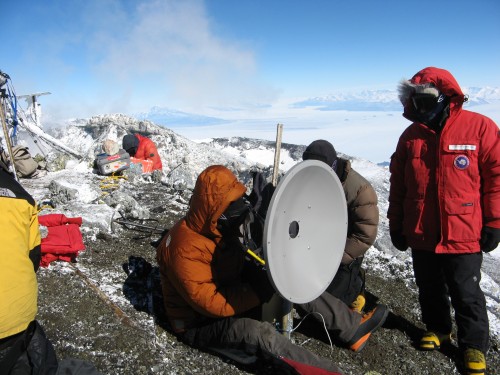
A microwave antenna sends data from instruments on the crater rim to a hut built at lower elevation, where researchers hunker down in the harsh climate.
Frozen fumaroles
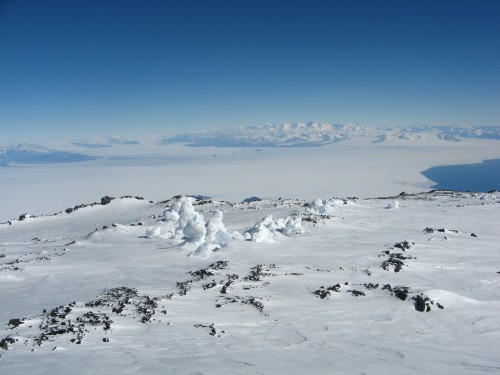
Ice Tower Ridge on the western side of Erebus volcano. Hot gas escaping through fissures on the volcano's slopes spew steam into the air, which then freezes into towers called fumaroles.
Erebus ice tower
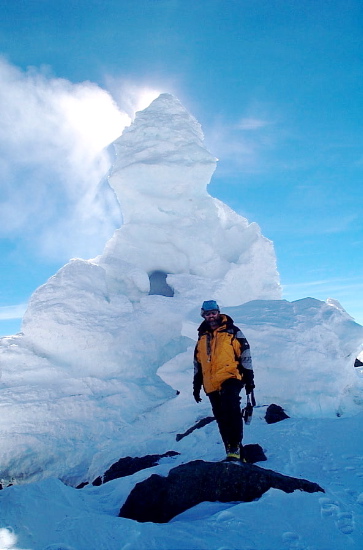
Volcanologist Phillip Kyle standing in front of an ice tower called "Harry's Dream."










